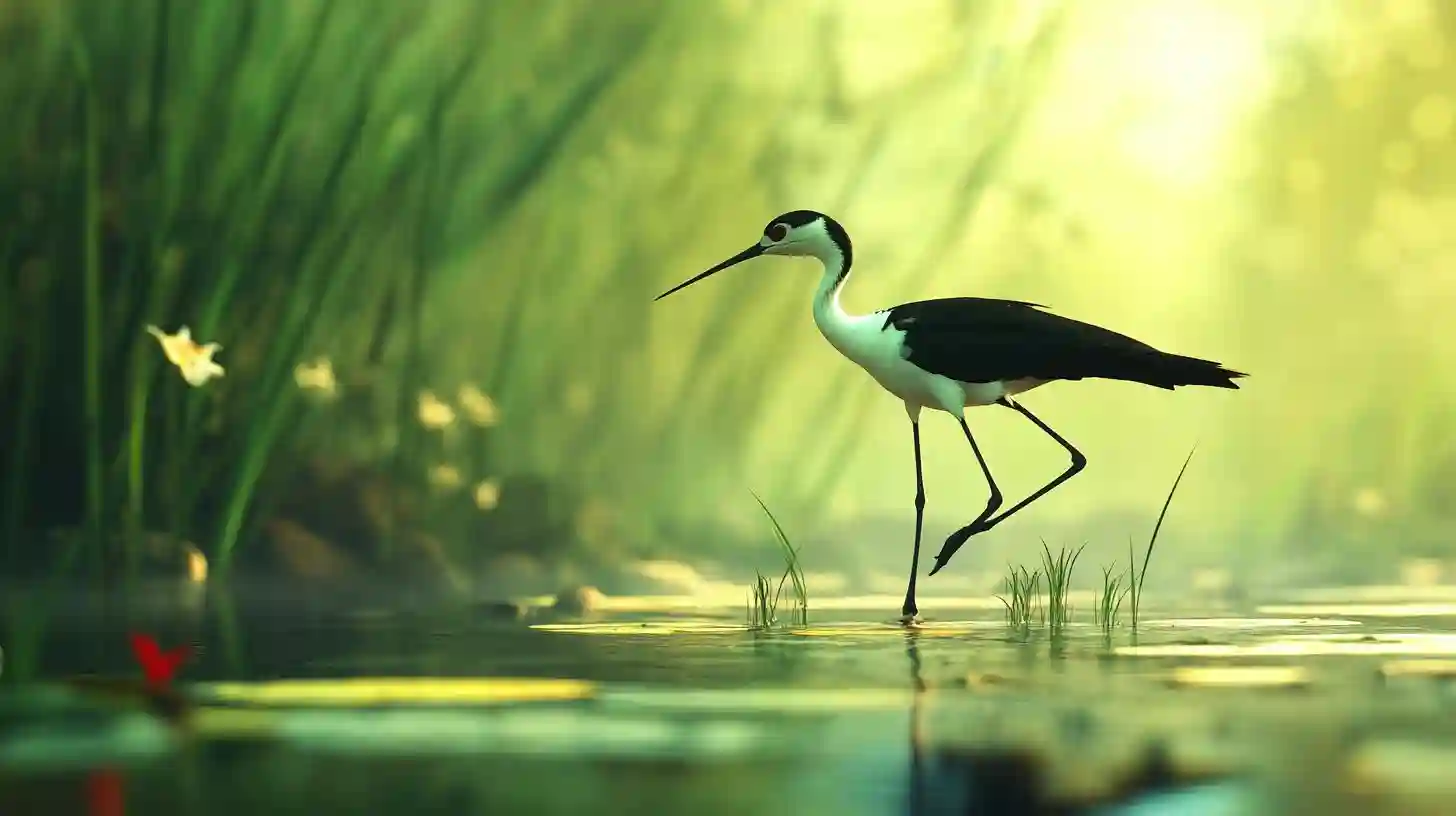
The black-winged stilt is a fascinating bird that captivates observers with its striking appearance and unique adaptations. This elegant shorebird is a member of the Recurvirostridae family, easily recognizable by its long, slender legs, elongated body, and distinctive black wings. With a wingspan that extends gracefully in flight, it navigates the wetlands and marshes effortlessly, evoking a sense of natural beauty in its surroundings.
Habitat plays a crucial role in the life of the black-winged stilt. These birds are often found in shallow freshwater or saline environments, including pebbly shores, mudflats, and wetlands. Their preference for open areas with plenty of exposed mud and water makes them well-suited for life in and around marshes. They are skilled foragers, utilizing their long legs to wade through water as they hunt for food. Their diet primarily consists of small invertebrates, such as insects, crustaceans, and larvae, which they find by probing into the mud or sweeping their bills through the water.
The breeding season brings further intrigue to black-winged stilts. They are known for their elaborate courtship displays, characterized by a series of high-pitched calls and synchronized movements. Males often engage in aerial displays, showcasing their agility and strength to attract potential mates. Nests are built on the ground, often situated in shallow depressions lined with pebbles and vegetation to provide camouflage and protection from predators. Often, they form small colonies, providing added safety during this vulnerable time.
One of the most remarkable aspects of black-winged stilts is their parental care. Both the male and female share the responsibilities of incubating the eggs and caring for the chicks. The eggs, usually laid in clutches, are camouflaged to blend seamlessly with their surroundings, enhancing their chances of evading predators. Once hatched, the precocial chicks are quick to leave the nest, following their parents to nearby feeding areas. This swift independence is essential for survival, as the parents help them find food and navigate their environment in the early days of life.
Migration is an integral part of the life of many black-winged stilt populations. Depending on their geographic location, these birds often migrate seasonally, seeking favorable conditions for breeding and feeding. Their migratory patterns are closely linked to the availability of resources in their habitats. Some populations travel long distances between their breeding grounds in temperate regions and their wintering habitats in warmer climates, demonstrating remarkable endurance and navigation abilities along the way.
An interesting social aspect of the black-winged stilt is its flocking behavior. These birds often gather in large numbers, especially outside the breeding season. Observing a group of black-winged stilts dining together or taking flight in unison can evoke a sense of harmony and cooperation among the species. The social dynamics within these flocks can also be complex, as they engage in displays of dominance and hierarchy while foraging and resting.
The vibrant plumage of the black-winged stilt adds to its allure. Adult birds typically display a striking contrast between their dark wings and the white body, with their long, slender legs exuding elegance. Breeding males may exhibit more pronounced color contrasts, enhancing their attractiveness during courtship. The striking appearance of the black-winged stilt has made them subjects of fascination not only for birdwatchers and ornithologists but also for photographers and artists who seek to capture their beauty in various forms of creative expression.
Conservation is becoming increasingly important for the black-winged stilt as habitat loss and environmental changes threaten their natural ecosystems. Wetland degradation due to urban development, agriculture, and pollution poses significant risks to their populations. Initiatives aimed at protecting wetlands and restoring their natural environments are crucial for ensuring the survival of not only the black-winged stilt but also countless other species that share these vital habitats.
Education and awareness about the importance of wetlands and the species that inhabit them are essential in fostering a deeper understanding of the natural world. Engaging local communities in conservation efforts can yield positive outcomes, as people become advocates for the preservation of their local ecosystems. Field studies and birdwatching initiatives can also stimulate interest and curiosity about the migratory patterns and behaviors of the black-winged stilt, encouraging a sense of stewardship for the environment.
The black-winged stilt emerges as a symbol of the delicate balance within ecosystems, showcasing the intricacies of nature’s design. Each element of its life cycle, from its striking appearance to its social behaviors, reinforces the interconnections found in the natural world. Observing this remarkable bird offers a glimpse into the wonders of wildlife, inspiring awe and appreciation for the richness of biodiversity. Through conservation efforts and increased awareness, we can ensure that future generations will have the opportunity to marvel at the beauty and grace of the black-winged stilt in its natural habitat.